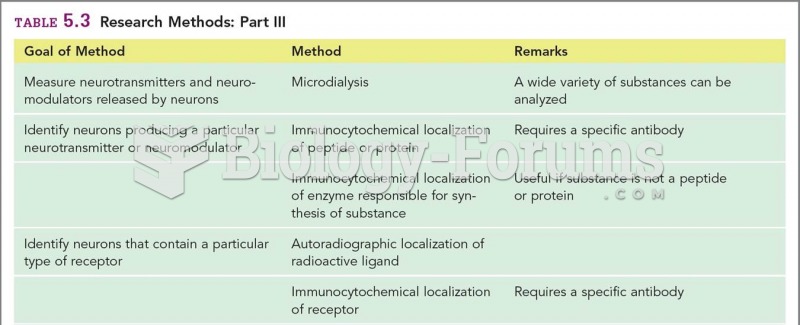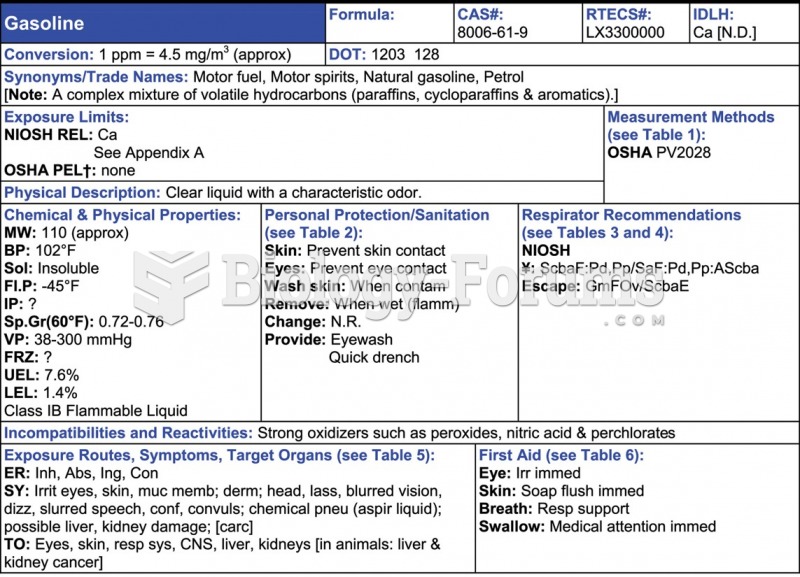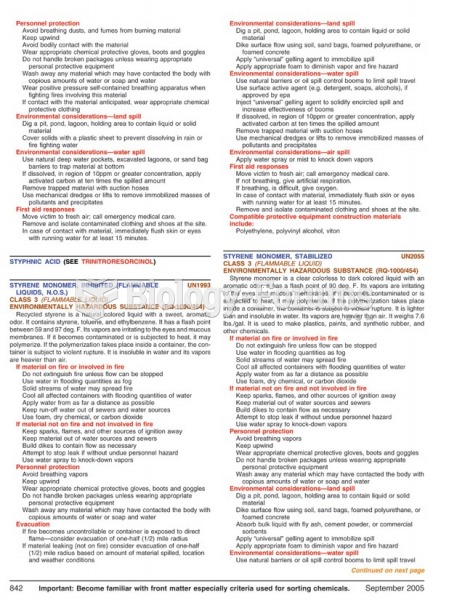|
|
|
Increased intake of vitamin D has been shown to reduce fractures up to 25% in older people.
The first oncogene was discovered in 1970 and was termed SRC (pronounced "SARK").
Warfarin was developed as a consequence of the study of a strange bleeding disorder that suddenly occurred in cattle on the northern prairies of the United States in the early 1900s.
Oxytocin is recommended only for pregnancies that have a medical reason for inducing labor (such as eclampsia) and is not recommended for elective procedures or for making the birthing process more convenient.
Side effects from substance abuse include nausea, dehydration, reduced productivitiy, and dependence. Though these effects usually worsen over time, the constant need for the substance often overcomes rational thinking.
 Field research on free-living primates allows primatologists to study patterns of behavior in the se
Field research on free-living primates allows primatologists to study patterns of behavior in the se
 Apply thumb pressure to forearm muscles, particularly the extensors muscles. Apply circular friction ...
Apply thumb pressure to forearm muscles, particularly the extensors muscles. Apply circular friction ...





